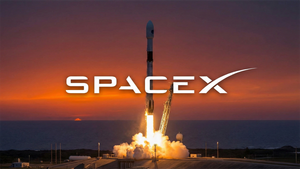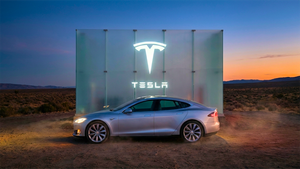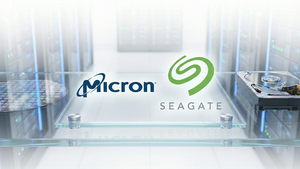
Financial markets are currently experiencing a period of intense exuberance around Artificial Intelligence (AI), but a growing chorus of experts is sounding the alarm, warning of a potential stock market bubble burst in 2025. Describing the current environment as a "toxic calm before the crash," analysts and institutions, including the Bank of England and the International Monetary Fund (IMF), point to rapidly inflating valuations, unproven business models, and a disconnect between investment and tangible returns as harbingers of a significant market correction. This sentiment signals a profound shift in risk perception, with potential ramifications for global financial stability.
The immediate significance of these warnings cannot be overstated. A sharp market correction, fueled by overheated tech stock prices, could lead to tighter financial conditions, dragging down world economic growth and adversely affecting households and businesses. Investors, many of whom are exhibiting aggressive risk-taking behavior and dwindling cash reserves, appear to be underestimating the potential for a sudden repricing of assets. Bank of America's Global Fund Manager Survey has for the first time identified an "AI equity bubble" as the top global market risk, indicating that institutional perception is rapidly catching up to these underlying concerns.
Economic Indicators Flash Red: Echoes of Past Manias
A confluence of economic and market indicators is fueling the warnings of an impending AI stock market bubble. Valuation metrics for AI-related companies are reaching levels that experts deem unsustainable, drawing stark comparisons to historical speculative frenzies, most notably the dot-com bubble of the late 1990s. While the forward Price-to-Earnings (P/E) ratio for the S&P 500 (NYSE: SPX) hasn't yet matched the dot-com peak, individual AI powerhouses like Nvidia (NASDAQ: NVDA) trade at over 40x forward earnings, and Arm Holdings (NASDAQ: ARM) exceeds 90x, implying exceptional, sustained growth. The median Price-to-Sales (P/S) ratio for AI-focused companies currently sits around 25, surpassing the dot-com era's peak of 18, with some AI startups securing valuations thousands of times their annual revenues.
This overvaluation is compounded by concerns over "unproven business models" and "excessive capital expenditure and debt." Many AI initiatives, despite massive investments, are not yet demonstrating consistent earnings power or sufficient returns. A Massachusetts Institute of Technology (MIT) study revealed that 95% of organizations investing in generative AI are currently seeing zero returns. Companies like OpenAI, despite a staggering valuation, are projected to incur cumulative losses of $44 billion between 2023 and 2028 and may not break even until 2029. The industry is also witnessing aggressive spending on AI infrastructure, with projected capital expenditure (capex) surpassing $250 billion in 2025 and potentially reaching $2 trillion by 2028, a significant portion of which is financed through various forms of debt, including "secret debt financing" by some AI "hyperscalers."
The parallels to the dot-com bubble are unsettling. During that period, the Nasdaq (NASDAQ: IXIC) soared 573% in five years, driven by unprofitable startups and a focus on potential over profit. Today, companies like Nvidia have seen their stock rise 239% in 2023 and another 171% in 2024. The International Monetary Fund (IMF) and the Bank of England have explicitly warned that current AI investment hype mirrors the excesses of the late 1990s, particularly noting "circular deals" or "vendor financing" where companies invest in customers who then purchase their products, potentially inflating perceived demand. While some argue that today's leading tech companies possess stronger fundamentals than their dot-com predecessors, the rapid ascent of valuations and massive, debt-fueled investments in AI infrastructure with uncertain near-term returns are flashing red lights for many market observers.
Reshaping the AI Landscape: Winners and Losers in a Downturn
A potential AI stock market bubble burst would significantly reshape the technology landscape, creating both vulnerabilities and opportunities across the industry. Tech giants like Microsoft (NASDAQ: MSFT), Alphabet (NASDAQ: GOOGL), Amazon (NASDAQ: AMZN), and Meta Platforms (NASDAQ: META), along with Nvidia, have been primary drivers of the AI boom, investing heavily in infrastructure and cloud services. While their significant cash reserves and diverse revenue streams offer a degree of resilience compared to dot-com era startups, their high valuations are tied to aggressive growth expectations in AI. A downturn could lead to substantial stock corrections, especially if AI progress or adoption disappoints.
Established AI labs such as OpenAI and Anthropic are particularly vulnerable. Many operate with high valuations but without profitability, relying on continuous, massive capital injections for infrastructure and research. A loss of investor confidence or a drying up of funding could force these labs into bankruptcy or fire-sale acquisitions by cash-rich tech giants, leading to significant consolidation of AI talent and technology. Similarly, AI startups, which have attracted substantial venture capital based on potential rather than proven revenue, would be the hardest hit. Highly leveraged firms with unproven business models would likely face a dramatic reduction in funding, leading to widespread failures and a "creative destruction" scenario.
Conversely, some companies stand to benefit from a market correction. Firms with strong fundamentals, consistent profitability, and diversified revenue streams, regardless of their immediate AI exposure, would likely see capital rotate towards them. "Application-driven" AI companies that translate innovation into tangible, sustainable value for specific industries would also be better positioned. Cash-rich tech giants, acting as opportunistic acquirers, could scoop up struggling AI startups and labs at distressed prices, further consolidating market share. Ultimately, a bust would shift the focus from speculative growth to demonstrating clear, measurable returns on AI investments, favoring companies that effectively integrate AI to enhance productivity, reduce costs, and create sustainable revenue streams.
Broader Implications: Beyond the Tech Bubble
The wider significance of a potential AI stock market bubble burst extends far beyond the immediate financial impact on tech companies. Such an event would fundamentally reshape the broader AI landscape, impacting technological development, societal well-being, and global economies. The current "capability-reliability gap," where AI hype outpaces demonstrated real-world productivity, would be severely exposed, forcing a re-evaluation of business models and a shift towards sustainable strategies over speculative ventures.
A market correction would likely lead to a temporary slowdown in speculative AI innovation, especially for smaller startups. However, it could also accelerate calls for stricter regulatory oversight on AI investments, data usage, and market practices, particularly concerning "circular deals" that inflate demand. The industry would likely enter a "trough of disillusionment" (akin to the Gartner hype cycle) before moving towards a more mature phase where practical, impactful applications become mainstream. Despite enterprise-level returns often being low, individual adoption of generative AI has been remarkably fast, suggesting that while market valuations may correct, the underlying utility and integration of AI could continue, albeit with more realistic expectations.
Societal and economic concerns would also ripple through the global economy. Job displacement from AI automation, coupled with layoffs from struggling companies, could create significant labor market instability. Investor losses would diminish consumer confidence, potentially triggering a broader economic slowdown or even a recession, especially given AI-related capital expenditures accounted for 1.1% of US GDP growth in the first half of 2025. The heavy concentration of market capitalization in a few AI-heavy tech giants poses a systemic risk, where a downturn in these companies could send ripple effects across the entire market. Furthermore, the massive infrastructure buildout for AI, particularly energy-intensive data centers, raises environmental concerns, with a bust potentially leading to "man-made ecological disasters" if abandoned.
The Path Forward: Navigating the AI Evolution
In the aftermath of a potential AI stock market bubble burst, the industry is poised for significant near-term and long-term developments. Immediately, a sharp market correction would lead to investor caution, consolidation within the AI sector, and a reduced pace of investment in infrastructure. Many AI startups with unproven business models would likely shut down, and businesses would intensify their scrutiny on the return on investment (ROI) from AI tools, demanding tangible efficiencies. While some economists believe a burst would be less severe than the 2008 financial crisis, others warn it could be more detrimental than the dot-com bust if AI continues to drive most of the economy's growth.
Long-term, the underlying transformative potential of AI is expected to remain robust, but with a more pragmatic and focused approach. The industry will likely shift towards developing and deploying AI systems that deliver clear, tangible value and address specific market needs. This includes a move towards smaller, more efficient AI models, the rise of agentic AI systems capable of autonomous decision-making, and the exploration of synthetic data to overcome human-generated data scarcity. Investment will gravitate towards companies with robust fundamentals, diversified business models, and proven profitability. Key challenges will include securing sustainable funding, addressing exaggerated claims to rebuild trust, managing resource constraints (power, data), and navigating job displacement through workforce reskilling.
Experts predict that the period from 2025-2026 will see the AI market transition into a more mature phase, with a focus on widespread application of AI agents and integrated systems. Applications in finance, healthcare, environmental solutions, and product development are expected to mature and become more deeply integrated. Regulation will play a crucial role, with increased scrutiny on ethics, data privacy, and market concentration, aiming to stabilize the market and protect investors. While a bubble burst could be painful, it is also seen as a "healthy reset" that will ultimately lead to a more mature, focused, and integrated AI industry, driven by responsible development and a discerning investment landscape.
A Crucial Juncture: What to Watch Next
The current AI market stands at a crucial juncture, exhibiting symptoms of exuberance and stretched valuations that bear striking resemblances to past speculative bubbles. Yet, the genuine transformative nature of AI technology and the financial strength of many key players differentiate it from some historical manias. The coming weeks and months will be pivotal in determining whether current investments translate into tangible productivity and profitability, or if market expectations have outpaced reality, necessitating a significant correction.
Key takeaways suggest that while AI is a truly revolutionary technology, its financial market representation may be overheated, driven by massive investment that has yet to yield widespread profitability. This period will define long-term winners, forcing a maturation phase for the industry. A market correction, if it occurs, could serve as a "healthy reset," pruning overvalued companies and redirecting investment towards firms with solid fundamentals. Long-term, society is expected to benefit from the innovations and infrastructure created during this boom, even if some companies fail.
Investors and policymakers should closely monitor upcoming earnings reports from major AI players, looking for concrete evidence of revenue growth and profitability. The focus will shift from raw model performance to the strategic deployment of AI for tangible business value. Watch for actual, significant increases in productivity attributable to AI, as well as regulatory developments that might address market concentration, ethical concerns, or speculative practices. Liquidity patterns and venture capital funding for startups will also be critical indicators. The market's heavy concentration in a few AI-centric giants means any instability in their AI divisions could have cascading effects across the tech ecosystem and broader economy.
This content is intended for informational purposes only and represents analysis of current AI developments.
TokenRing AI delivers enterprise-grade solutions for multi-agent AI workflow orchestration, AI-powered development tools, and seamless remote collaboration platforms.
For more information, visit https://www.tokenring.ai/.






